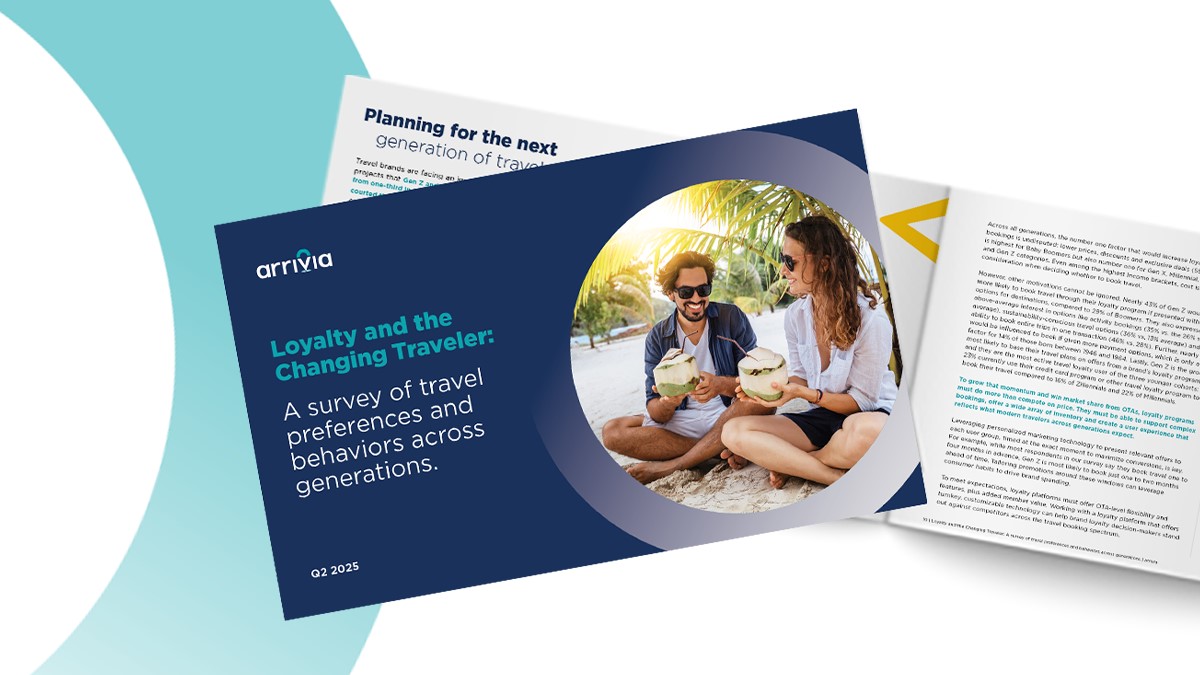There’s a reason 90% of organizations offer some type of loyalty program, and it’s not because these brands enjoy brainstorming clever program names or custom rewards. It’s because loyalty programs drive a considerable return on investment (ROI), as evidenced by the 80% of consumers who say they interact with and purchase more frequently from brands with a loyalty program.
Consumers faithfully flock to loyalty programs, increasing engagement, transaction values, and even customer lifetime values. With so many benefits, are there different ways to calculate a loyalty program’s ROI? Better yet, how do you evaluate the value of a loyalty program in terms of the bottom line? Here’s everything you need to know to confidently measure loyalty program ROI.
How Do You Measure Loyalty Program ROI?
Return on investment (ROI) is a critical metric when evaluating the effectiveness of any business initiative, particularly ones that require ongoing investments like loyalty programs. To measure loyalty program ROI, first, round up the program’s recurring expenses — like technology, people, and marketing costs — and then subtract them from the program’s revenue to calculate its profit.
Next, divide the program’s profit by its total expenses. Finally, multiply that figure by 100 to express your loyalty program ROI as a percentage. For example, a loyalty program initiative with a profit of $1,000 and total costs of $500 would have an ROI of 2, or 200% when expressed as a percentage. A successful loyalty program that profits more than it costs will always have a positive ROI.
However, in the context of loyalty programs, ROI extends far beyond monetary gains. Instead, loyalty program ROI encompasses various tangible and intangible benefits contributing to ultimate business success and scalability. These benefits range from decreased customer acquisition costs and customer churn rate to higher average transactions, which are explained in detail below.
How to Calculate Loyalty Program ROI Metrics
So, how do you measure loyalty program ROI? Aside from the calculation above, there are several ways to monitor loyalty programs’ profitable contributions. Here are the top eight loyalty program ROI metrics to track, with each standard formula.
Customer Retention Rate (CRR)
Loyalty programs are often called ‘customer retention programs,’ and for good reason. They work to enhance an organization’s customer retention rate (CRR), or the number of customers who continue to give the brand their business over a set period of time. As such, CRR is expressed as the percentage of a company’s existing customers who have remained loyal during that period.
To calculate the customer retention rate of your loyalty program, apply this formula:
CRR = [(# of customers at the end of a period – # of customers acquiring during a period) ÷ # of customers at the start of a period] x 100
Average Transaction Value
As the name might suggest, average transaction value measures the amount a shopper spends on a single purchase. It’s often called average order value (AOV) for online businesses. With a points-to-perks loyalty program, you can encourage customers to spend more on each purchase to access greater loyalty program benefits. Apply this formula to learn your average transaction value:
Average Transaction Value = Total revenue over a period ÷ Total number of transactions in a period
Customer Lifetime Value (CLV)
Customer lifetime value (CLV) metrics reveal what the average customer is worth to an organization throughout the course of the business relationship. It involves multiplying the average transaction value from a set period by the total number of purchases over the same period to first devise customer value. To calculate the CLV driven by your loyalty program, apply this formula:
CLV = Customer value x Average customer lifespan
Redemption Rates
No matter your chosen loyalty program structure, your organization likely offers a variety of loyalty rewards to encourage ongoing program adoption and participation. As such, redemption rates are an essential key performance indicator (KPI) to gauge customer satisfaction with your loyalty rewards. You can apply this formula to calculate your program’s redemption rates easily:
Redemption Rate = (# of times rewards were redeemed ÷ # of users offered rewards) x 100
Net Promoter Score (NPS)
You’re likely familiar with Net Promoter Score (NPS), a popular customer experience metric and retention program metric. NPS is essentially a measure of consumer loyalty, indicating how likely shoppers are to recommend your loyalty program to someone they know on a scale of 1 through 10. Shoppers who select 9 or 10 are considered “net promoters,” while those who choose 6 or below are considered “net detractors.” To learn your Net Promoter Score, follow this formula:
NPS = Total % of promoters – Total % of detractors
Customer Acquisition Cost (CAC)
Customer acquisition cost (CAC) is a metric often correlated to sales and marketing effectiveness. In simple terms, CAC quantifies the total expenses involved in converting a lead into a paying customer. In the context of a loyalty program, CAC will involve the costs of loyalty marketing, such as paid advertisements, email marketing, and expenses tied to new member rewards.
The formula to determine the customer acquisition cost for your loyalty program is as follows:
CAC = Total marketing and sales costs ÷ Total number of new customers acquired
Customer Engagement Metrics
Customer engagement metrics are monitored across operations, whether interactions with a brand’s marketing materials or participation in a program’s loyalty rewards. In the lens of loyalty program ROI, it’s wise to track engagement where users access their loyalty rewards, such as your business website, mobile loyalty application, or even social media, to gauge reward relevancy.
To calculate the customer engagement levels driven by your loyalty program, apply this formula:
Engagement Rate per Reward = (Total engagements with a reward ÷ Total followers) x 100
Churn Rate
Did you know that there are 3.3 billion memberships in the United States alone — for context, that’s 10 times more than the entire U.S. population. With so many memberships, some consumers will inevitably churn. However, tracking how many members churn to learn if your loyalty program benefits are enough to drive a true ROI is vital. When calculating churn, apply this formula:
Churn Rate = (# members at the beginning of a period – # members at the end of a period) ÷ # members at the beginning of a period
Connecting Loyalty Program ROI to Revenue Growth
It’s no secret that loyalty programs are pivotal in boosting business revenue by fostering stronger, more profitable customer relationships. What’s less obvious is how loyalty program ROI can be so high when these programs require ongoing expenses. The answer is through increased consumer spending, repeat transactions, and ultimate retention that enhances customer lifetime value.
For a better idea of how a loyalty program benefits revenue growth, consider that 66% of customers are likelier to continue doing business with a company because of its loyalty program. Moreover, 79% of customers will increase their brand spending to maximize potential loyalty rewards that reduce customers’ dependence on discounts, driving up transaction values.

What Are the Soft Benefits of Loyalty Programs?
When it comes to loyalty program ROI, we’ve mentioned two types of benefits: tangible and intangible. These are frequently referred to as hard and soft benefits, respectively. Hard benefits are comparable to the metrics shared above, KPIs that have a measurable impact on the bottom line, such as average transaction value and customer churn rate.
Soft loyalty program benefits, on the other hand, don’t have an easy formula to calculate their return — but they still maximize the ROI of loyalty programs. Take a look at some of the most advantageous soft benefits of loyalty programs:
- Enhanced Customer Experience. Statistics show that customers enjoy participating in loyalty programs and earning rewards, improving the general customer experience.
- Improved Brand Perception. Seven out of 10 consumers consider loyalty programs a leading factor in securing brand loyalty, working to influence brand perception positively.
- Greater Competitive Edge. The average consumer belongs to nearly 17 programs but actively uses less than half, making a fruitful program a significant competitive advantage.
- Word-of-Mouth Marketing. More than half of consumers will likely recommend an effective loyalty program to a friend or family member, driving word-of-mouth referrals.
- Community Building. Loyalty program members often forge an online community that shares user-generated content, testimonials, and recommendations for the brand.
How arrivia Helps Businesses Measure Loyalty Program ROI
Loyalty program benefits positively impact an organization’s bottom line, from customers who spend more (more often) to customers who become devoted brand advocates. When it’s time to measure your loyalty program ROI, simplify your processes and scale your profits with arrivia, the world’s leading comprehensive travel rewards and white-label travel portal.
Explore our business solutions today to learn how arrivia can help boost your bottom line.



